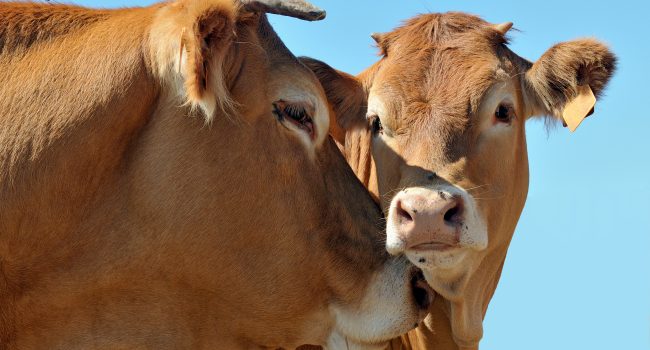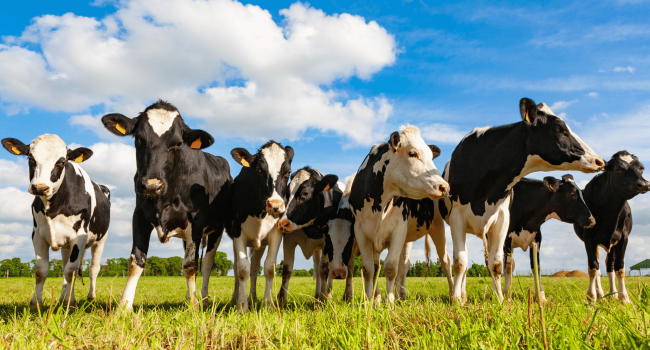Alternatives to Antibiotics Growth Promoters in Ruminants
In animal production, the use of sub-therapeutic levels of antibiotics growth promoters in animal feeds is common practice in many countries for the purpose of improving growth performance and preventing the adverse effects of pathogenic and non-pathogenic enteric micro-organisms.
However, increasing public and scientific concerns have arisen regarding this use of antibiotics growth promoters as feed additives for animal production.
Specifically, the emergence of antibiotic resistance in many human pathogenic bacteria (Manero et al., 2006; Parveen et al., 2006), the release of contaminating residues into the environment (water, soil, etc.) (Yang and Carlson, 2004) and the risk of growth-promoting antibiotic residues occurring in foods of animal origin, prompted the European Union to ban antibiotics growth promoters as feed additives in 2006, Indonesia following suit in 2019 and China in 2020.
However, countries such as the United States, Argentina and Brazil still permit their use in the case of intensive feedlot cattle systems.
This ban prompted the search for alternative agents as growth promoters and antimicrobials, in order to face the demand for, and the production of, ruminants raised without the use of antibiotics – the downside being that the removal of growth promoters has led to animal performance issues and a rise in the incidence of certain animal diseases.
What are the alternatives to the use of antibiotics growth promoters?
The antibiotics growth promoters alternatives are based on novel strategies and commercial compounds or products for improving animal health and performance, their safety, efficacy and cost-effectiveness being of prime concern.
An example of such a strategy is based on the preservation of intestinal and ruminal integrity, thus preventing intestinal inflammation and increasing the absorption of nutrients. In turn, this leads to the energy being allocated to production requirements (improvement of feed intake, increased protein production in the case of milk and meat), resulting in an overall improvement in animal performance.
Various compounds or products are being considered as more natural alternatives to in-feed antibiotics:
- Organic acids such as dicarboxylic acids (aspartate, fumarate and malate) are considered to be naturally occurring substances since they are major metabolic intermediates of the citric acid cycle and are therefore commonly found in plant and animal tissues. They can be added to feed or drinking water and establish their antimicrobial effect in the intestines by suppressing fungal activity and maintaining an acidic environment. Supplementation with dicarboxylic acids in the diet of ruminants will therefore reduce rumen methane production and maintain the rumen pH (Lopez et al., 1999; Carro and Ranilla, 2003; Newbold et al., 2005), and improve the animal’s energy balance and health;
- Phytochemicals are plant-based compounds, such as essential oils, tannins and saponins, which have been shown to have beneficial effects attributed to their antimicrobial and antioxidant properties, in addition to immunomodulatory effects. The mechanism of action of phytochemicals is not clearly understood but may depend on the composition of the active ingredients in the product being used (Lillehoj et al., 2018);
- Probiotics or direct-fed microbials (DFM) are live microorganisms which, when administered in adequate amounts, confer a health benefit to the host, by stabilizing the microbial communities of the digestive tract. Probiotics have been found to stimulate immunity, produce antimicrobial substances, induce competitive exclusion of pathogens, and prevent certain feed allergies. Other benefits include antioxidant and anticarcinogenic effects, reduction of inflammation and improvement of mineral absorption. Inclusion into the ruminant ration of various probiotic species such as Lactobacillus, Pediococcus, Streptococcus, Bacillus, Bifidobacterium and Saccharomyces spp. has improved feed utilisation and growth performance, by stabilizing the rumen ecology and thus nutrient utilisation (Bidarkar et al., 2014);
- Prebiotics, in contrast, are indigestible by animals and can favour the presence of beneficial microorganisms in the intestine. Research found that the indigestibility of prebiotics ensures that they reach the colon intact, where they act as an energy source for bacteria, unlike normal sugars which become digested directly by the host (Gibson et al., 1995);
- In-feed enzymes can be added to animal food, in order to help the animals break down and digest plant materials such as cellulose or pectin;
- Immunomodulators stimulate the immune system in a way that is less dependent on the pathogen causing the infection, which makes them effective against a broad range of diseases;
- Vaccines, used for preventing diseases caused by viruses or certain bacteria, and the use of bacteriophages, endolysis and lysozymes, aimed at infecting and/or destroying bacterial cells, are also relevant strategies in the search for alternatives to antibiotics;
- Antimicrobial peptides are short molecules with antibacterial properties, which can prove to be toxic toward certain bacteria.
The future of alternatives to antibiotics growth promoters
Modern animal production is caught between concerns regarding risks to public health and increasing demand for products of animal origin.
Problems relating to the potential presence of antibiotic-resistant bacterial strains within the food chain, especially after the banning of non-therapeutic antibiotics growth promoters in animal feed in the EU, have been the impetus for increased research and development into alternatives to antibiotics growth promoters for use as feed additives in livestock.
Moreover, alternatives to antibiotics growth promoters could be important tools in the field of veterinary practice as they can improve growth performance in farm animals to levels comparable to antibiotic-mediated levels. For this reason, new strategies and commercial compounds and products must still be developed, with a focus on their economic viability as well as on their efficiency, to minimize or eliminate the pathogen load in the livestock and food chain.
Future studies should target strategies for developing commercial products which are not only compatible with modern consumer demands for animal welfare and more environmentally friendly animal production (e.g., organic farming), but which also support farmers’ needs for higher livestock production.
This information is intended for informational purposes only and does not imply any warranty related to or express recommendations for the cure, mitigation, treatment, or prevention of disease.
![[EN] BLOG What are the alternatives to antibiotics in ruminants](https://www.premix.adm.com/wp-content/uploads/2022/09/Cows-standing-in-a-stall-and-eating-hay_AdobeStock_417630862-scaled-1800x600.jpeg)





